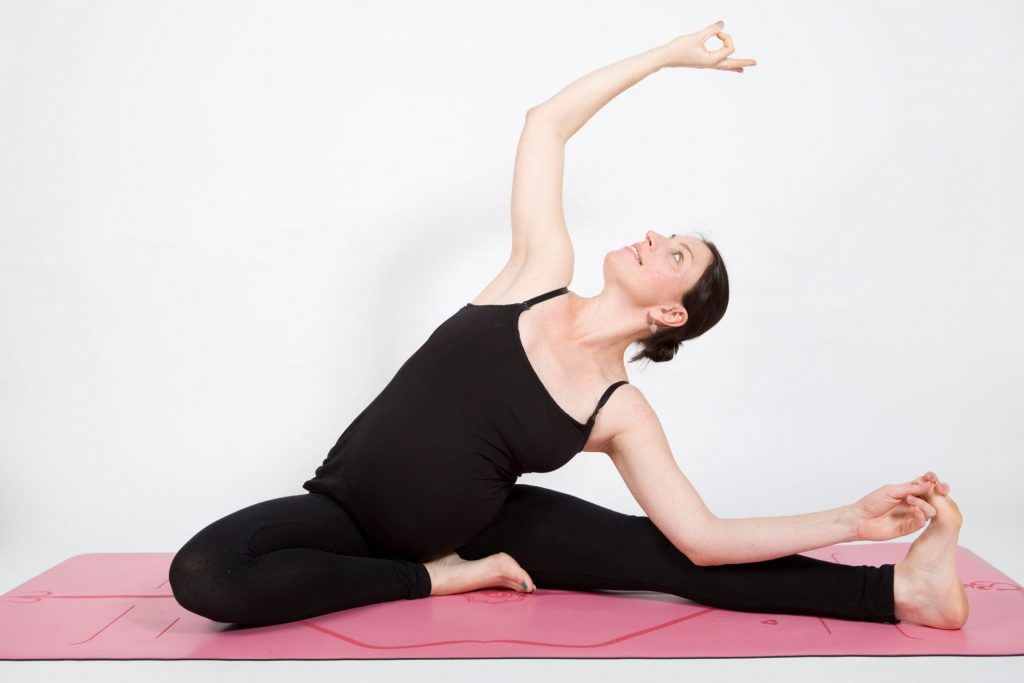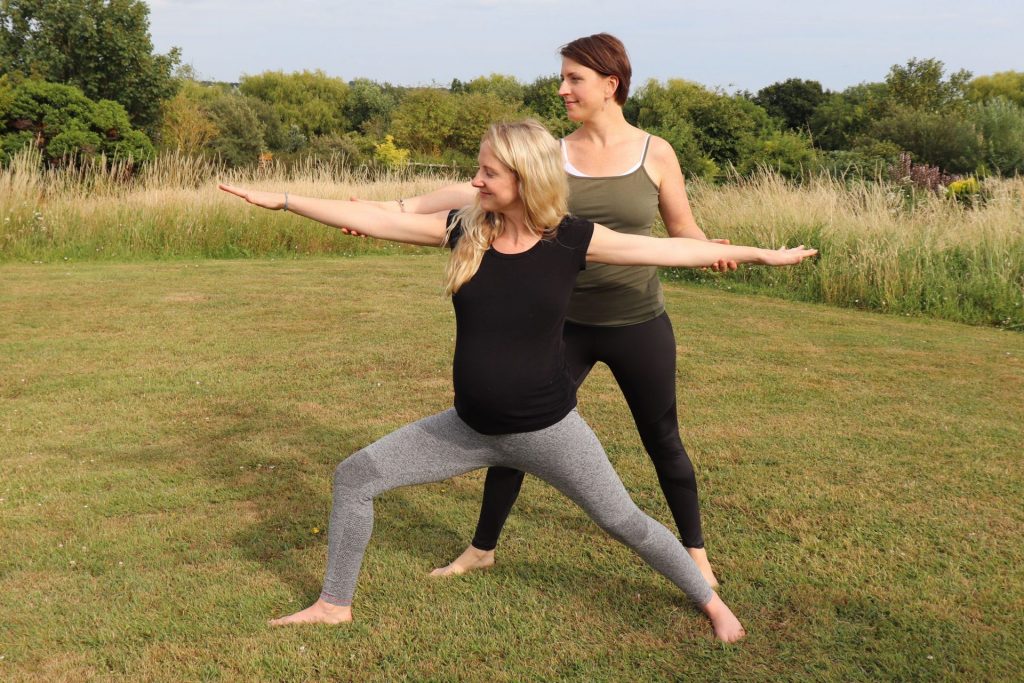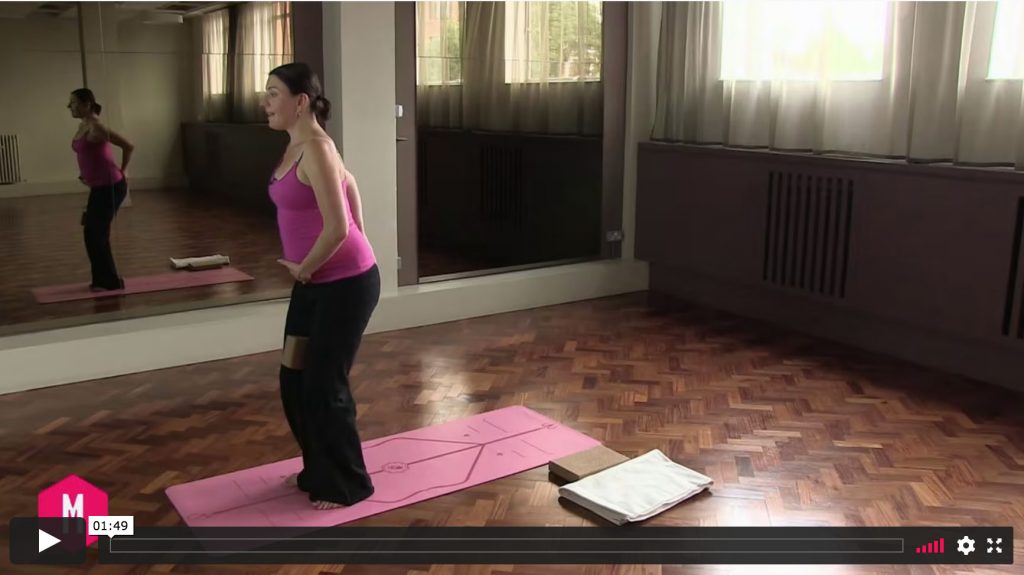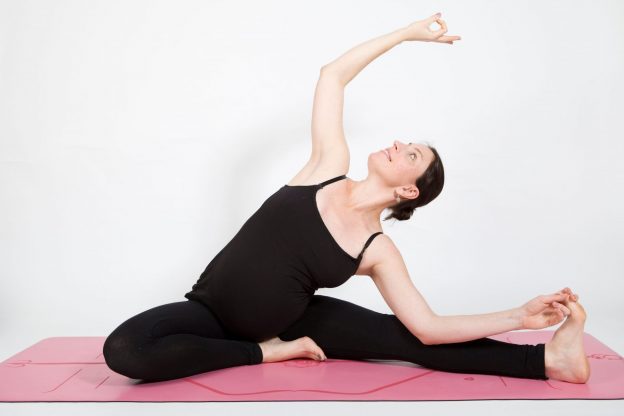
What are the links between stress and maternal wellness? Sally Parkes explores why depression in pregnant women is on the increase and how yoga can help.
The Effects of Stress on Maternal Wellness
We are now in an age where being stressed is a normal way of life. Rapid increases in chronic stress from: sleep deprivation; poor quality food; sedentary lifestyle and long working hours are all contributing factors to the increasing prevalence of depression. (Hidaka BH. et al). This is true of pregnant and new mothers and stress can have a detrimental effect on maternal wellness.
Read more about yoga for stress and anxiety in this complete guide
Stress, depression and the wellbeing of new mothers
It is no wonder then that depression has increased exponentially within our society. As a result, it is thought that prenatal depression is now just as common as postnatal depression with cases increasing all the time. A large study by Pearson R et al of pregnant Western women, showed a 51% increase in prenatal depression, compared to their mothers experience of pregnancy in the 1990’s. Reasons for this were found to be related to the additional stressors placed upon modern day mums such as increased workload, inflexible work arrangements and the feeling that they must ‘do it all’, all of which are associated with ‘greater depressive symptoms in mothers’ (Goodman WB. et al)
Hormones and depression
Stress hormones and depression are of course inextricably linked. This is largely because the release of stress hormones cortisol and adrenaline hinder the release of love hormone oxytocin and feel-good hormone serotonin. This creates a chemical imbalance.
The effects of this imbalance can be far reaching for both mother and baby in utero. For example, prolonged periods of increased stress hormones reduce the ability to rest and recover from the day. Or to digest food and process information received from the environment in which we exist. This puts the mother, whose bodily systems are already working much more intensely than they would otherwise, under more stress in order to ‘keep going’, and reduces the release of feel good hormones further. This means the mothers mind and body’s ability to relax is further obstructed, and her potentially joyful experience of pregnancy, birth, and the fourth trimester in particular is hindered.

Decreasing stress to increase maternal wellness
With this in mind then, the focus for the mother and baby’s wellbeing must be on decreasing the release of stress hormones so the happy hormones can flow more freely. But how? Well, we know that stimulation of Sympathetic Nervous System, our ‘fight or flight’ division of the nervous system, sends the signal for the endocrine system to release these hormones, so it would make sense then to focus on decreasing its stimulation. On a practical level, this can be done by having more quiet time, doing less, replacing negative thoughts with positive, eating well and by practising the right kind of yoga.
Why is yoga so good in pregnancy?
Yoga in general and of course yoga for pregnancy can be wonderful for allowing our Parasympathetic Nervous System, otherwise known as our ‘rest and digest’ system, to come in to play and to get our feel-good hormones flowing. This literally changes the mothers brain chemistry for the better. In a study of thirty pregnant women by Emerson D. et al, 60% of which had a documented history of ‘psychological distress’, all participants ‘identified perceived benefits (of prenatal yoga) as improved relaxation, reduction of psychological distress, improved bonding with their baby in utero, labour preparation, and social connectedness with their peers’.
Moreover, a long-term large study of over two thousand pregnant women by Styles A et al, concluded that ‘our findings are consistent with other studies that have shown that the symptoms of stress can reduce after eight weeks of weekly yoga practice’. It should also be noted that some women also reported feeling better after just one yoga session.
It is well documented therefore that yoga whilst pregnant can help with lowering the effects of stress and depression on the pregnant mothers wellbeing. But what yoga postures are the most effective for the prenatal mother when it come to her mental health and over all wellbeing?
Which yoga works best for mothers?
In my years of teaching yoga to pregnant mothers I have noticed that they benefit greatly from practices that focus a little on strength and mobility followed by seated asana and then relaxation with the focus on deep breathing. This way, we have a release of the three magic hormones; endorphins, serotonin and oxytocin. With this in mind then, here are some suggestions for any pregnant mothers’ yoga practice, especially if she experiencing the effects of stress, depression or low mood.
Yoga Poses for stressed pregnant mothers
- Cat and Cow pose, kneeling on all fours x 6
- Tree Pose – raised foot no higher than just below the knee – Hold for 5 breaths
- Triangle Pose – place lower hand just below the knee – Hold for 5 breaths
- Eagle Pose – Hands on prayer is ‘arm wrap’ is not accessible – Hold for 5 breaths
- Warrior 2 – position feet on a slight diagonal stance – Hold for 5 breaths
- Chair Pose – hands in prayer position in front of heart – Hold for 5 breaths
- Wall heart opener – stand side on to the wall and reach arm closest to the wall so the palm of the hand presses in to the wall. Position the arm back to a comfortable angle – Hold for ten breaths.
- Downward Dog – to be replaced with Child Pose when in third trimester – Hold for 5 breaths
- Cobblers Pose – with cushions or blocks under the thighs – Hold for 10 breaths
- Revolved Head to Knee Pose – place lower hand on floor near thigh for extra support – Hold for 5 – 10 breaths
- Open Half Lord of the Fishes Pose – sit on a block and rotate away from the top leg – Hold for 5 breaths
- Supported Reclined Cobblers Pose – place bolsters and blocks under head and spine to circulation is not hindered and cushions or blocks under the thighs – Hold for at least 2 minutes.
- Legs up the wall pose – place a yoga belt around the lower legs for support. Not to be done in the third trimester – Hold for at least 2 minutes.
- Savasana – lie on the left side with the top leg bent and forwards, resting on a bolster or similar. Lower leg is straight. Place a cushion underneath the head – Hold for at least 10 minutes.
>>Why not try this all trimester class from Sally?<<

Please note that this article is in no way intended to replace medical advice or treatment for mental health issues associated with maternal wellness. And we advise you talk to someone and seek help should you be experiencing mental health issues, especially during pregnancy and postnatally.
Read more in Yoga for Stress and Anxiety: A Complete Guide
About Sally Parkes:
Sally Parkes BSc is a Senior Yoga teacher and runs pregnancy, postnatal and 200hr yoga teacher trainings.
References:
Hidaka BH; Depression as a disease of modernity: explanations for increasing prevalence. J Affect Disord. 2012;140(3):205-214
Pearson RH; Prevalence of Prenatal Depression Symptoms Among 2 Generations of Pregnant Mothers. JAMA Network Open 2018.
Goodman WB; The Family Life Project Key Investigators. Longitudinal associations between maternal work stress, negative work-family spillover, and depressive symptoms. Fam Relat. 2009;58(3):245-258
Emerson D; Trauma-sensitive yoga: principles, practice and research. Int J Yoga Ther. 2009;19(1):123–8.
Styles A; Prenatal yoga for young women a mixed methods study of acceptability and benefits. BMC 2019.





Leave a Reply